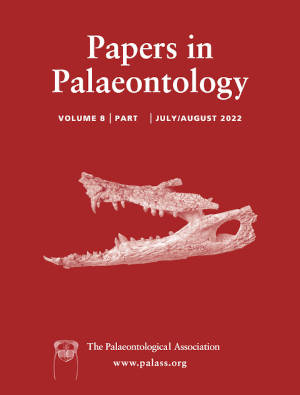Article: Campanian (Late Cretaceous) Theonellidae and Phymaraphiniidae (lithistid Demospongiae) from the Miechów and Mogilno-Łódź synclinoria (southern and central Poland): new data and taxonomic revision
Publication: Papers in Palaeontology
Volume:
8
Part:
2
Publication Date:
2022
Article number:
e1426
Author(s):
Ewa Świerczewska-Gładysz, and Agata Jurkowska
DOI:
10.1002/spp2.1426
Abstract
Abstract Theonellid and phymaraphiniid sponges were described for the first time in assemblages of Campanian lithistid Demospongiae collected from Miocene gravels in the Bełchatów lignite mine (Mogilno-Łódź Synclinorium, central Poland). Here we add an analysis of sponges from museum collections, as well as of newly collected material from Campanian strata in the Miechów Synclinorium. Four phymaraphiniid and 11 theonellid species have been distinguished in these assemblages. Two phymaraphiniid species (Phymaraphinia infundibuliformis and Prokaliapsis janus), and five theonellids (Rhagadinia doederleini, Rhoptrum scytaliforme, Astrocladia laevis, Colossolacis plicata and Phyllodermia antiqua) have not been recorded previously from the Campanian of Poland. With three exceptions, all other theonellids and phymaraphiniids described herein are also known from the Campanian of Subhercynian and/or Lower Saxony basins in Germany. On account of the good preservation of the sponge skeletons, new data on the choanosomal and ectosomal spicules of Cretaceous theonellids and phymaraphiniids can now be presented. Our analysis of the distribution of theonellids and phymaraphiniids in various Cretaceous facies has allowed palaeoenvironmental factors conducive to the settlement of these sponges to be outlined.
